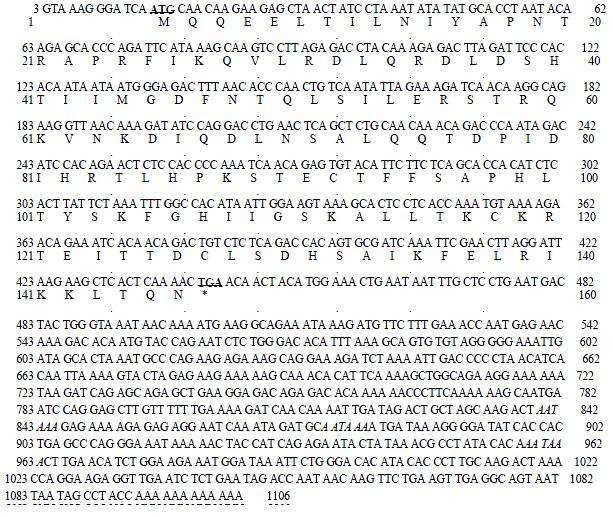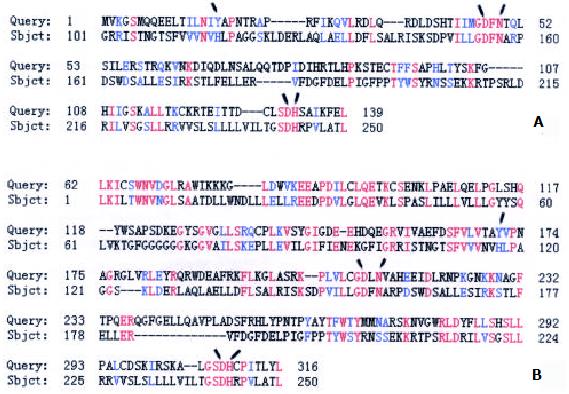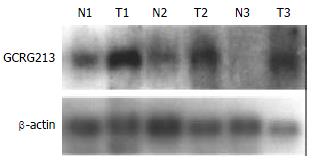Copyright
©The Author(s) 2003.
World J Gastroenterol. Jun 15, 2003; 9(6): 1196-1201
Published online Jun 15, 2003. doi: 10.3748/wjg.v9.i6.1196
Published online Jun 15, 2003. doi: 10.3748/wjg.v9.i6.1196
Figure 1 Sequence of the human GCRG213 cDNA.
The DNA sequence encoding the predicted start (ATG) and stop (TGA) codons is bolded and underlined. Three possible polyadenylation signals (AATAAA) are in italics. The protein encoded by the open reading frame is indicated in the single-letter code below the DNA sequence.
Figure 2 NCBI conserved domain search results.
A: GCRG213 ORF produced significant alignments with gnl|Pfam|pfam 01260 AP_endonucleas1, AP endonuclease family 1; CD-length = 250 residues, only 61.0% aligned; Score = 88.2 bits (217), Expect = 3e-19. B: Human APE protein produced significant alignments with gnl|Pfam|pfam01260 AP_endonucleas1, AP endonuclease family 1; CD-length = 250 residues, 100.0% aligned. Score = 161 bits (407), Expect = 1e-40. GCRG213-ORF contained residues such as Y171, D210, N212, D308 and H309 (arrowed) that are important for the endonuclease activity of APE .
Figure 3 Northern blot analysis of GCRG213 in human gastric tissues.
GCRG213 showed higher expression in tumor tissues than in non-tumorous ones. The expression of β-actin served as an internal control. N: non-tumorous tissue; T: tumor; 1-3: patient number.
Figure 4 In situ hybridization analysis of GCRG213 in formalin-fixed, paraffin-embedded tissues with a digoxigenin-labeled anti-sense probe, NBT/BCIP was used as alkaline phosphatase substrates, the expression appeared as cytoplasmic staining (blue precipitates).
(A) gastric adenocarcinoma invading into the muscle layer showed grade 2+ ~ 3+ staining, (B) gastric IM epithelium showed grade 2+ ~ 3+ staining, (C) normal gastric glands showed grade ± ~ + staining, (D) negative control. Magnification was 10 × 10.
- Citation: Wang GS, Wang MW, Wu BY, Liu XB, You WD, Yang XY. A gene encoding an apurinic/apyrimidinic endonuclease-like protein is up-regulated in human gastric cancer. World J Gastroenterol 2003; 9(6): 1196-1201
- URL: https://www.wjgnet.com/1007-9327/full/v9/i6/1196.htm
- DOI: https://dx.doi.org/10.3748/wjg.v9.i6.1196












